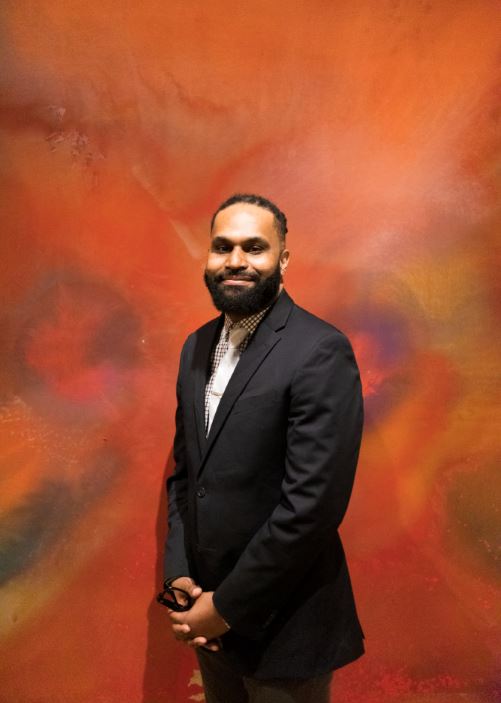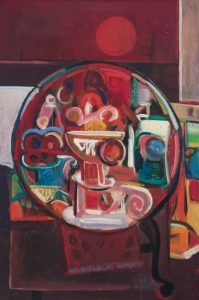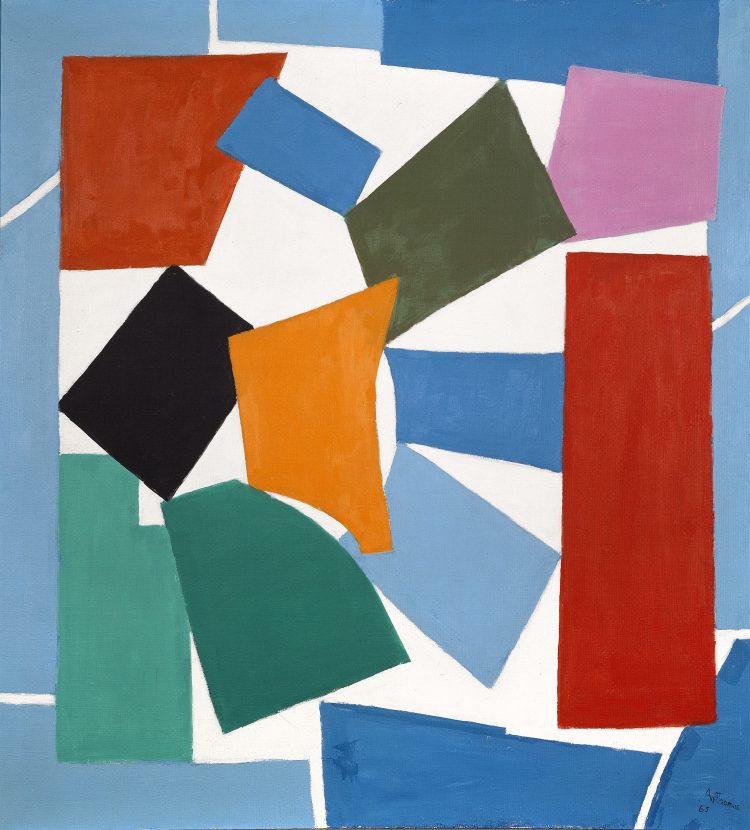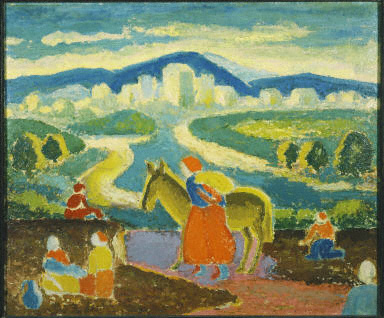Meet our new Director of Learning and Education Strategies Anne Taylor Brittingham. Anne oversees program development, in-gallery interpretation, and adult, teacher, and PK12 initiatives.

Anne Taylor Brittingham with Alma Thomas’s Breeze Rustling Through Fall Flowers (1968)
Tell us about yourself!
I grew up in Columbia, South Carolina. I was a Classical Studies major at Wake Forest University and got my MA in Art History from the University of Virginia. I fell in love with art history when I studied abroad in Florence, Italy, in college. I discovered museum education through an internship in the education department of the Virginia Museum of Fine Arts the summer before my senior year of college. That internship completely transformed my career trajectory. After grad school, I taught English at a high school in Thessaloniki, Greece, and spent two summers working on an archaeological dig in Aidone, Sicily. My first museum job was as a Gallery Teacher at the J. Paul Getty Museum. From there I went to the Frist Center for the Visual Arts (now Frist Art Museum) in Nashville as Curator of Interpretation, then to the Corcoran Gallery of Art as Director of Interpretation, and then to the Speed Art Museum in Louisville as Director of Learning and Community Outreach and then Chief Engagement Officer.
What excites you about working at The Phillips Collection? What do you think makes the Phillips unique?
I’m so excited to be back in DC working with a collection I love! The structure of the Education and Community Engagement department is really innovative and provides so many opportunities for collaboration and growth both within the museum and out in the community. I love the size of the museum, think the collection is so special, and I am so impressed with the education department and the work they’ve been doing.
What project are you most interested in working on?
I’m so excited to partner with Nehemiah (Director of Community Engagement) in thinking about how a museum can be relevant across the DC metropolitan area and can be a model for how a museum creates the structure to enhttp://blog.phillipscollection.org/2020/03/03/meet-nehemiah-dixon/sure its greatest impact in the community. Nehemiah has done such amazing things and is so well-connected in the DC community. I can’t wait to start working together. I’m also excited to join the education team and think strategically about how we can build capacity and expand the museum’s reach with PK12, families, and adult audiences. And finally, I think the museum’s presence at THEARC and its partnership with the University of Maryland offers unlimited possibilities to redefine what a museum can be and what it can do.
Why do you think arts education is important?
I think arts education teaches people how to look closely, think critically, and take risks. It also lets us hear and understand different opinions and viewpoints. I have had amazing experiences with students and adults in front of works of art. Even when the art is unfamiliar, I love when it makes people instantly curious. The pull toward works of art can be just as strong as those forces that keep us from opening up and talking about sensitive issues. The artwork can become a vehicle to carry us through important conversations about a whole range of contemporary issues. In a museum education department, we can create experiences that are real, engaging, hands on, and personally and socially meaningful.
What is your favorite artist/artwork at the Phillips and why?
Alma Thomas’s Breeze Rustling Through Fall Flowers (1968). I love the rhythm, pattern, and color of this painting and how it makes me feel when I stand in front of it. I love Alma Thomas’s biography—her work as an educator in DC and then after retiring from teaching, devoting herself full-time to painting at the age of 68. At 80, she was still innovating! When she spoke to the New York Times at the opening of exhibition at the Whitney Museum in 1972, she said: “When I was a little girl in Columbus, there were things we could do and things we couldn’t. One of the things we couldn’t do was go into museums, let alone think of hanging our pictures there. My, times have changed. Just look at me now.” Alma Thomas shows us how far we’ve come, but also how much farther we can go. She shows us the power of museums to change what we see and how we see the world in which we are living.
Tell us a fun fact about yourself.
I finished in second place to an Olympic gold medalist in swimming . . . when we were 11 years old!






